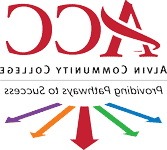多导睡眠图(睡眠医学)- A.A.S. 学位
技术标准
工作概述
Qualified applicants are expected to meet all admission criteria as well as essential
功能. Students requesting reasonable 住宿 to meet these criteria must
inform the 项目负责人 in writing of the need for 住宿 at the time
入学. The student is expected to contact the ADA counselor in the new ESC
(Enrollment Services Center) to file the appropriate forms documenting the need for
住宿.
|
功能能力分类 |
代表活动/属性 | 例子 |
|
粗大运动 |
|
Function in an ICU environment: move about in an ICU room in order to perform procedures 在病人身上. Must also read patient chart, equipment settings, and/or equipment 显示. 坐下来记录调查结果. Change equipment settings above head and below waist, plug electrical appliance into wall outlets. |
|
精细运动技能 |
|
将药瓶举到眼睛前阅读. 将药瓶挤压至空. 挤压 巴拉德吸管按钮. Grasp hold and read small instruments such as volume 测量装置. 填写病历. 在病历中记录患者数据. 改变设置 on equipment by turning knob and observing change. |
|
物理 |
|
Stand and perform repetitive procedure(s) on patients such as Chest 物理 Therapy 和心肺复苏. Repeat this procedure periodically throughout an 8-hour shift. |
|
物理 |
|
协助病人从床上到椅子上. 把病人从床上扶起来. 把病人从担架上移开 上床再回来. Carry medications, pulse oximeter, stethoscope or other equipment 到病房. Push ventilator or other heavy equipment from respiratory care department 到病房. Move other equipment such as Pulse Oximeter, IPPB or IPV machine. 将设备从 bed height to shelf height above chest level. |
|
流动性 |
|
Turn to change settings on monitor while standing at patient bedside. 屈服于改变 equipment settings on floor, at knee level, waist level, chest level, eye level, above head. Gather equipment and manually resuscitate patient without delay. 使快速 adjustments if needed to ensure patient safety. Make way 到病房 if an emergency 叫做使用楼梯. |
|
听力 |
|
Listen to patient breath sounds to determine if patient is breathing. 倾听内心 sounds to determine if heart is beating. Determine the intensity and quality of patient breath sounds in order to help determine 诊断. Hear audible alarms such as a ventilator alarm. 将开销页面设置为 呼叫紧急援助. |
|
视觉 |
|
Read patient chart to determine correct therapy. 目视评估病人的颜色 评估缺氧情况. Read settings on monitors and other equipment. 视觉评估 的变化. Confirm settings visually such as with ventilator display. |
|
触觉 |
|
Assess patient by feeling for patient pulse, temperature, tactile fremetis, edema, 皮下气肿. |
|
气味 |
|
Assess for noxious odors originating from the patient or environment (example gas 泄漏或冒烟). |
| 阅读 |
|
Read and interpret physician orders, physician, therapist and nurses notes. 读取 计算机显示器屏幕. Gather data reasonably accurate, and in a reasonable amount of time to ensure safe and effective patient care relative to other care givers. |
| 数学能力 |
|
Read and interpret patient graphics charts and graphic 显示. 进行基本算术运算 功能 in order to calculate minute ventilation, convert temperature, correctly place graduated tubing, and other 功能. |
|
情绪稳定 |
|
Provide for safe patient care despite a rapidly changing and intensely emotional environment. Perform multiple tasks concurrently, example: delivery of medication or oxygen in one room while performing an arterial blood gas in another such as in an emergency 房间环境. Maintain enough composure to provide for safe and effective patient care despite crisis 情况下. |
|
分析思考 |
|
Evaluate different sources of diagnostic information to help arrive at a patient diagnosis. Evaluate priorities in order to provide for the most appropriate care. 适当地 evaluate data in order to notify physician and nursing when necessary. |
|
批判性思维 |
|
Evaluate different sources of diagnostic information to help arrive at a patient diagnosis 和治疗. Evaluate data in order to formulate an appropriate action plan. |
|
人际关系技巧 |
|
Communicate effectively with disagreeable patients, family doctors, and nurses and other staff in order to attempt to meet therapeutic goals for the patient. |
|
沟通技巧 |
|
Communicate effectively and appropriately with doctors, nurses, patients, family, and other staff in order to provide for most effective and efficient patient care. |
大学 & 职业生涯路径
多导睡眠描记术 (Sleep Medicine) is part of our Health Career Pathway. 点击方框 below to see other Health programs that may interest you.

